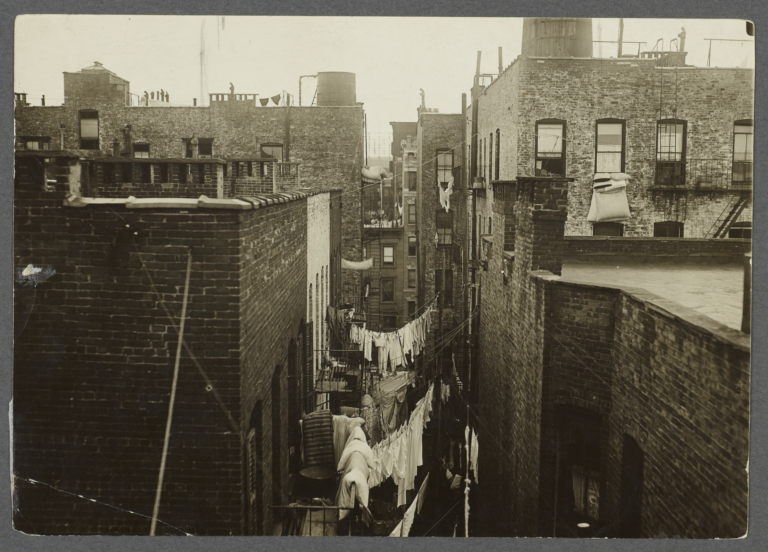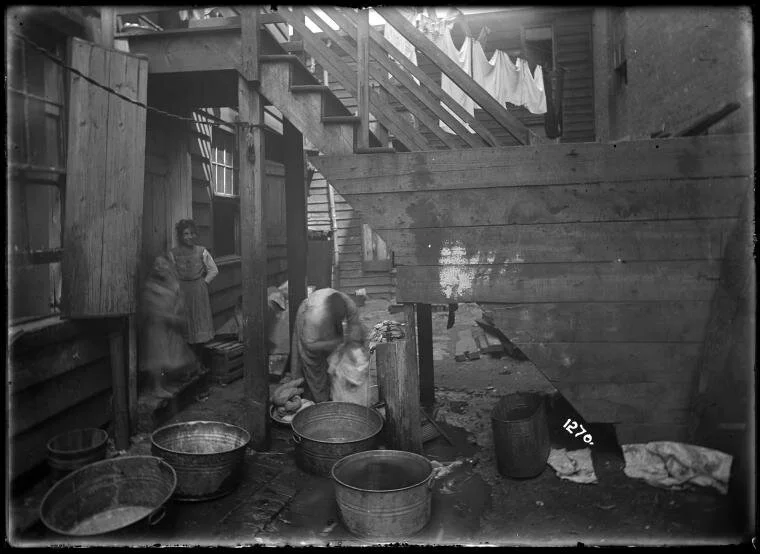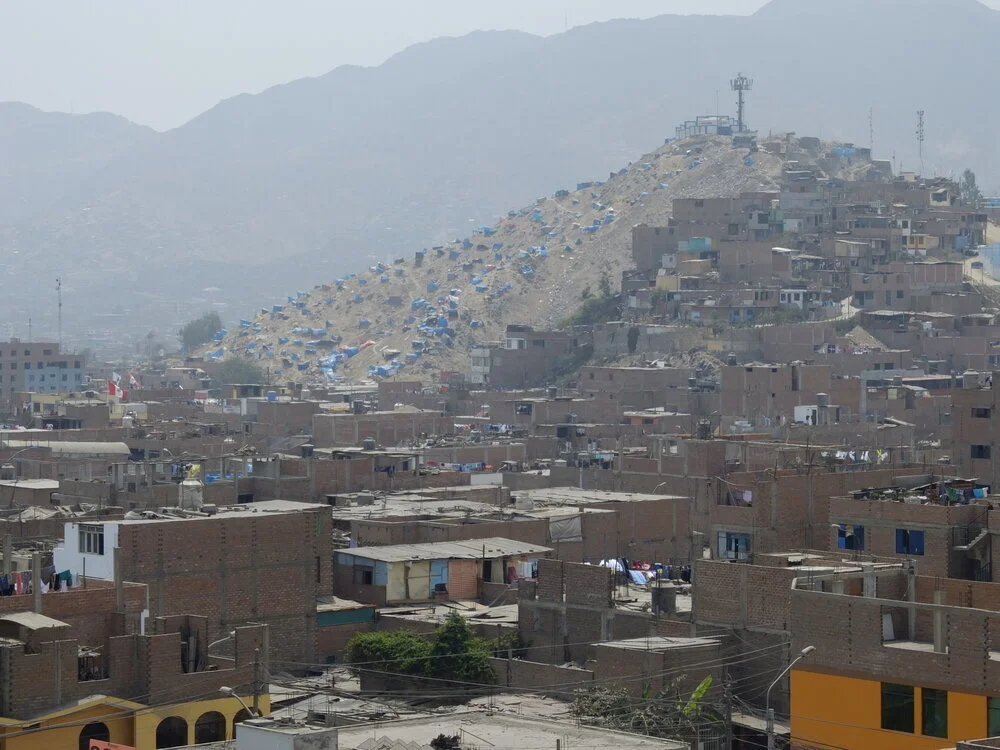Ethics of Habitation
“These objects, and the cares, skills and chains of possibility they gather, dominate the spatial and social landscape of the emerging settlement. Within the individual household, this agency is manifest in the attention given to, and commanded by, building a house piece by piece when time and resource allow, the measures taken to pirate water and electricity, build sanitary pits, and make indoor or outdoor showers and kitchens, making a house into a home by decorating and furnishing rooms…and seeing to the daily denials, disruptions and repairs caused by infrastructural improvisation. This is a process of infrastructural crafting that mixes the ‘thrill’ of home ownership, the satisfaction of artisanal accomplishment, and the satisfaction of working with others with the anxieties of exposure to the natural elements…the dangers of live wires causing fires and sanitation pits flowing over, and the worries of securing the wellbeing of the family.”[1]
Beginning in the second part of the nineteenth century, a series of technological innovations, emergent forms of knowledge related to urban planning, public health, and jurisprudence, made their way, along with countless immigrants from across Europe, to the New World. This overseas crossing of new and alternative forms of technical knowledges, practical policies and immigrants from all walks of life converged and was felt most intensely in the cities of Buenos Aires and New York, transforming the tenement houses where they settled into centers of socio-ethical experimentation.
My dissertation research inquired into three different, yet, entangled aspects of how ethics came to be inhabited in the tenement houses of Buenos Aires and New York City between 1870 and 1920. To answer this question I examined the practices through which tenement dwellers, reformers, sanitary inspectors, journalists, and philanthropists constructed knowledge about the tenement everyday life. I took these practices of knowledge production as a foundation for the analysis of ethical practice in the tenement house. Following this interpretative analytical path, I analyzed first how the tenement house was produced as “problem” – a housing, public health, and moral problem and, simultaneously, as “home.”
Secondly, I examined how material things were constitutive of ethical practices. This has led me to propose an alternative definition of ethics that reconsiders the emphasis on both rule-following behavior and judgment-based action, which have been greatly influential in the study of morality across the field of sociology. The research underscored that ethical practice is locally grounded, creative, improvised, and rooted in skillful coping rather than in individual interest, universal reason or obedience to norms. The definition I offer refrains from attributing ethical qualities to persons and the guidelines of behavior they follow. In the context of the tenement house, I define ethical practice as the tenement bodies’ attuning to what it took to co-habit or stitch a space of dwelling together with other bodies.
Lastly, this historical ethnography was concerned with the question of how ethical practice emerges out of everyday engagements. The overflowing bodies I have examined – tenement dwellers, bundles, stews, courtyards, and clotheslines – were attuned to each other in practice. This attunement did not require reflective practice but an awareness of other bodies engaged together in everyday practice. Cutting across spatial scales, the research revealed that the overflowing bodies of the tenement houses gathered around them practices across temporal changes. Overflowing bodies such as bundles and clotheslines gathered around them practices and forms of life that bridged over the New York City old-law (before 1901) and new-law (after 1901) buildings, as well as across the Buenos Aires partitioned and purpose-built tenement houses. By using the lens of relational urbanism, the research identified connections between the long-forgotten bodies of tenement houses and the “homegrown neighborhoods” of many peripheries of contemporary global cities.[2]
The materiality of bricks, corrugated metal, plastic tanks, poles, wires, and tubes help ground homes in a present and future however provisional. The bodies of things gather around them everyday practices, stitching together emergent localities. These keep people, objects, and land together, into provisional forms of urban dwelling. The ways in which “homegrown neighborhoods” participate to larger urban processes is obscured when they are demarcated as “slums” or housing/urban ‘problems’. Instead, an analysis of overflowing bodies that suture these habitats together could make visible how these emergent homes are tied to wider urban processes in which other urban forms are implicated as well.
Notes on photographs: This essay has a not-for-profit, educational purpose, therefore the use of the included archive photographs should be considered “fair use.” Photo 1: “Tenement Houses.” Source: Rare Book and Manuscript Library, Special Collections, Columbia University, New York City Community Service Society Papers; Photo 2: “In districts like this.” Source: Rare Book and Manuscript Library, Special Collections, Columbia University, New York City Community Service Society Papers; Photo 3: “Three women doing laundry in tenement backyard, 1904.” Source: New York Public Library, Photographic negatives of the New York City Tenement House Department, 1902-1914; Photo 4: “Tenement houses. 1268 Piedras Street has 104 rooms and more than 500 dwellers. View from within a tenement house.” Source: Argentina Archivo General de la Nación Dpto. Doc. Fotográficos o AR_AGN_DDF/ Consulta _INV 18213_A; Photo 5: “Here live human beings.” Source: Argentina Archivo General de la Nación Dpto. Doc. Fotográficos o AR_AGN_DDF/ Consulta _INV 412_A.; Photo 6: “Tenement houses in Buenos Aires.” Source: Argentina Archivo General de la Nación Dpto. Doc. Fotográficos o AR_AGN_DDF/ Consulta _18214_A. Photo 7: “Houses in the outskirts of Lima, Peru, 2016.” Source: Olimpia Mosteanu.
References:
[1] Ash Amin, “Lively Infrastructure,” Theory, Culture & Society 31, no. 7/8 (2014): 138.
[2] I use the concept of “homegrown neighborhoods” to avoid the morally and politically burdened concept of ‘slum’. Rahul Srivastava and Matias Echanove offer a compelling critique of the use of the word ‘slum’ to describe such neighborhoods and they propose instead the concept of ‘homegrown neighborhood’, see: Raul Srivastava and Matias Echanove, “‘Slum’ is a Loaded Term. They are Homegrown Neighbourhoods,” The Guardian, November, 28 2014, https://www.theguardian.com/cities/2014/nov/28/slum-loaded-term-homegrown- neighbourhoods-mumbai-dharavi For an overview of the problems with the study of ‘makeshift’ or ‘homegrown’ neighborhoods as slums, see: Alan Gilbert, “The Return of the Slum: Does Language Matter?” International Journal of Urban and Regional Research 31, no. 4, (2007): 697-713. Such positions are in opposition with the view adopted by the UN-Habitat, which legitimates this way of seeing the city by highlighting the need to “[distinguish] slum from non-slum areas”, see: “Distinguishing Slum from Non-slum Areas to Identify Occupants’ Issues,” UN-Habitat News Section, Accessed Feb 16, 2018, https://unhabitat.org/distinguishing-slum-from-non-slum-areas-to-identify-occupants-issues/ For an argument about the prevalence of ‘slums’ around the world, see: Mikes Davis, Planet of Slums (New York: Verso, 2006).






